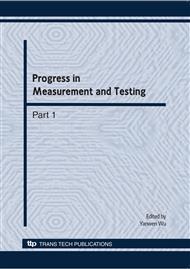p.162
p.168
p.172
p.178
p.184
p.190
p.195
p.201
p.207
A New Method on Laboratory Evaluation of the Effectiveness of Consolidant Treatments for the Conservation of Historic Stone Buildings and Sculptures
Abstract:
Historic stone materials have to deal with weathering. The desire to preserve cultural heritage created a wide variety of products to reduce the rate of stone decay and to strengthen decayed stone, but it is difficult to evaluate their protective efficiencies. In this paper, a simple preparation method of an imitation of weathering stone is reported. The imitation was prepared with calcium carbonate particles mixed with water. Then, using imitations as the consolidated objects, the consolidation efficiency of a novel biomimetic protectant was investigated. The experimental results indicate that the evaluation method is simple and feasible, and the selected protectant does perform a favorable function of consolidant. The characterization method is helpful in numerically giving some direct indications of the consolidation effectiveness.
Info:
Periodical:
Pages:
184-189
Citation:
Online since:
May 2010
Authors:
Price:
Сopyright:
© 2010 Trans Tech Publications Ltd. All Rights Reserved
Share:
Citation:


